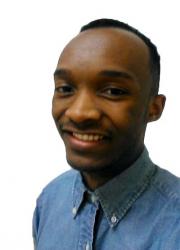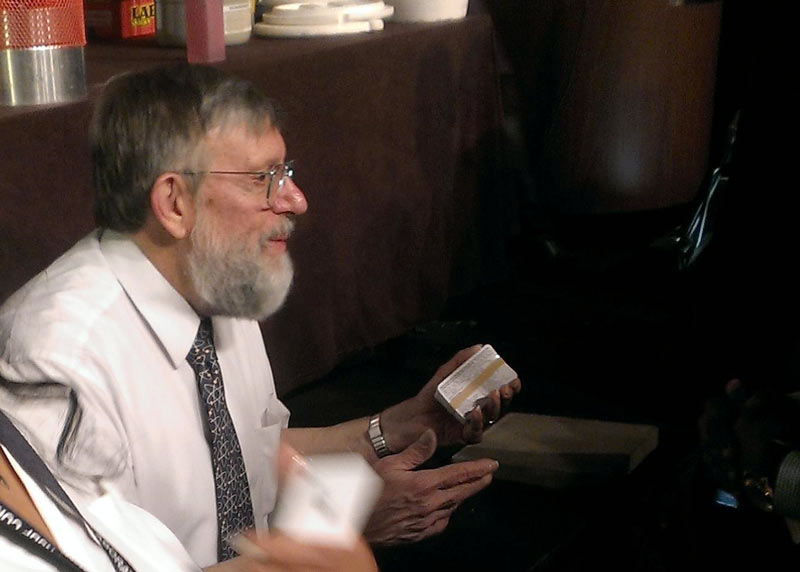The 2015 Meeting of the National Society of Black Physicists
January 4, 2015 to January 8, 2015
Baltimore, Maryland
By:Omari McDuffey
SPS Chapter:
 As a sophomore applied physics major and Society of Physics Students (SPS) member at Towson University, I wanted to delve deeper into the world of physics and meet more professionals and students with similar ideas. I figured the best way to do this was to attend an event and get real world experience. Since this conference was the first such event I’ve ever attended, I wasn’t sure what to expect, but I was far from disappointed. When I arrived at the National Society of Black Physicists (NSBP) conference there was a plethora of people, a long itinerary, and conference rooms as far as the eye could see. Although I wasn’t intimidated, it was still a great deal to handle all at once.
As a sophomore applied physics major and Society of Physics Students (SPS) member at Towson University, I wanted to delve deeper into the world of physics and meet more professionals and students with similar ideas. I figured the best way to do this was to attend an event and get real world experience. Since this conference was the first such event I’ve ever attended, I wasn’t sure what to expect, but I was far from disappointed. When I arrived at the National Society of Black Physicists (NSBP) conference there was a plethora of people, a long itinerary, and conference rooms as far as the eye could see. Although I wasn’t intimidated, it was still a great deal to handle all at once.

On the Thursday I arrived at the National Society of Black Physicists conference there was a lot going on, but I did arrive just in time to see Nobel laureate William Phillips speak and I was very pleased. The grand ballroom where he gave his presentation was filled to the brim with students and professors waiting in anticipation of hearing Dr. Phillips speak. His presentation focused on atomic cooling, and how to apply this principle to make the perfect atomic clock. The only way to make the perfect atomic clock (with an accuracy of one hundred million-million or greater) is to physically slow down cesium atoms. The slower the atom, the easier it is to make more accurate measurements and create a better clock. Dr. Phillips stated that the only way to do this requires the atoms to be cooled without touching them. He inflated balloons and then put them in liquid nitrogen to illustrate that slowing down the gas makes it easier for us to see and study an atom at a specific time in space. Dr.Phillips then concluded that the best way to cool cesium atoms enough is to slow them down with light. An atom moving toward a laser tuned below the atoms resonance frequency undergoes a Doppler shift. This makes the frequency appear to be the right frequency to absorb and slows down the atom. The crowd rose and applauded Dr. Phillips as he finished his presentation. Once he stepped off of the podium, he was greeted by a long line of professors and students eager to ask him questions and take pictures. I finally made my way to the front of the long line and asked, “Do you think there is any way that we could develop a room temperature superconductor?” He responded, “I think it’s possible, but first we really need to figure out why high and low temperature superconductors work in the first place, because we’re not really sure.”
When the second half of the Thursday sessions started, I found myself walking into an SPS careers workshop on networking put together by Kendra Redmond and Sean Bentley. The SPS career workshop was overflowing with students. We were told to separate into smaller groups where we introduced ourselves. We told our group members our name, major, and school. Soon after we started networking with the other students, we were told to develop an elevator pitch. An elevator pitch is a short networking tool that helps you introduce yourself to a potential contact in less than 30 seconds. The pitch consists of who you are, what you study, and your career aspirations and goals. At the end, you may also give them a way to contact you. After this exercise, the workshop promptly ended.
On Friday I sat in on a Quantum Mechanics workshop presented by Chandralekha Sign of the University of Pittsburgh. The major topics of discussion during this workshop were how to teach quantum mechanics to help physics students retain more of the information, problem solving strategies, and how to develop innovative students. Dr. Sign first taught us about the double-slit experiment, a quantum mechanical experiment that shows you wave and electron behavior. After presenting this information, Dr. Sign asks students theoretical questions about how to manipulate the double-slit experiment so the photons still pass through interferometers She stated that the key to creating better problem solvers is helping them learn the theory behind the formulas. Dr. Sign also gave advice about which quantum mechanics books teachers should use, stating that all good quantum mechanics books start with spin first. The quote that stuck with me the most during this workshop was, “Teachers need to explain the basic theory and inspire the students to produce innovative thought.”
On the final day of the National Society of Black Physicists conference, I attended another SPS careers workshop. The discussion topic concentrated on identifying your personal skills and abilities, and using them to stand out in job applications. At the beginning of the session, each participant received a Careers Toolbox binder that contained networking tips provided by SPS to help guide the discussion. Inside this binder were numerous pages full of pointers about networking and getting your career started as a physics major. During the discussion, students were asked to form groups and then list all of their hobbies, classes, internships, and skills. The students were then asked to relate things from their lists to a specific career in physics they were trying to pursue. Students seemed to have breakthroughs about how to approach their careers shortly after this task was completed. As this workshop was wrapping up each group used what they had learned in the previous workshops to network and build connections with each other.
After going to this meeting I feel that I’m a lot more involved in not just the NSBP community, but the physics community in general. I would also like to thank NSBP and all of the organizations and donors who made this annual meeting possible. I’m very proud that I had the opportunity to meet all of these participants who are excelling in their field and pushing this country forward as a whole. Building connections and hearing the ideas of the attendees of this event only made my experience, and physics in general, more enjoyable.
Areas of Alignment: Career Resources: Scientific Categories:
